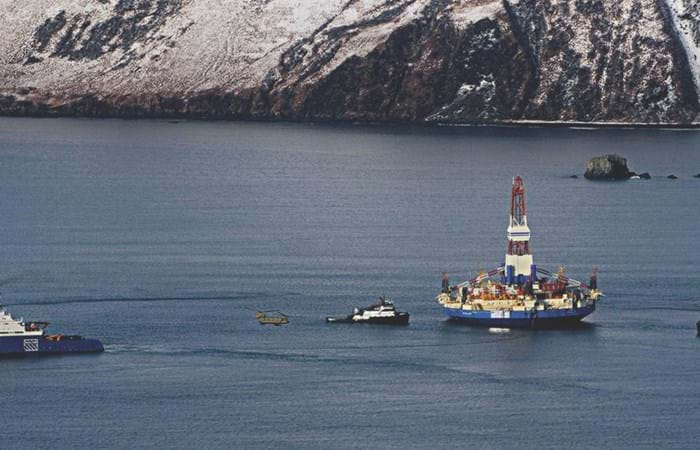In late December 2012 when the conical drilling rig ‘Kulluk’, 9,900 DWT, was under tow to Seattle the tow connection parted in a severe storm in the Gulf of Alaska. Despite efforts to re-establish the tow connection the rig eventually grounded on the pristine coast of Sitkalidak Island, which is part of Kodiak Island.
The severe weather, condition of the rig, remote location and the fact that the rig was located in one of America’s most sensitive environments meant that a successful salvage operation was given the highest priority. It was vital to prevent further harm to the environment and a swift refloat was required to avoid any additional damage to the specialized rig. The owners of the Kulluk contracted SMIT Salvage under a LOF contract to perform this exceptionally challenging task.
Although flight availability was scarce due to the holiday period and aircraft types were restricted because of the remote location and suitable airstrips on Kodiak Island, the first team of salvage experts were mobilized and brought into Alaska by a chartered plane. Additional salvage crew consisting of engineers, naval architects and shore support followed shortly hereafter. After the salvage team inspected the rig a salvage plan was submitted and approved by the owners, local authorities and the US Coast Guard. By utilizing SMIT’s Dyneema towing lines the casualty was successfully refloated on January 6th, 2013.
After refloating the rig it was towed to a sheltered location where a dive survey was conducted to assess the damage. After a thorough assessment by the salvors, showing no major damage, the rig was redelivered to its owners. SMIT Salvage continued its operation by assisting the owners with extensive preparations for onward towage to Dutch Harbor, Alaska. Once it had safely arrived there, the rig was loaded onto a heavy transport vessel on the 19th of March for onward transport to Singapore where the same salvage team, supported by Smit’s Singapore organization, unloaded the rig from the heavy transport vessel.

